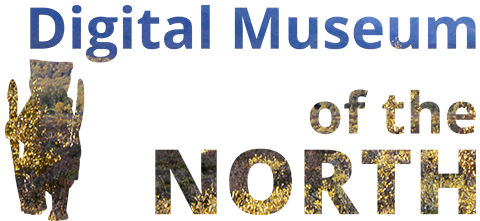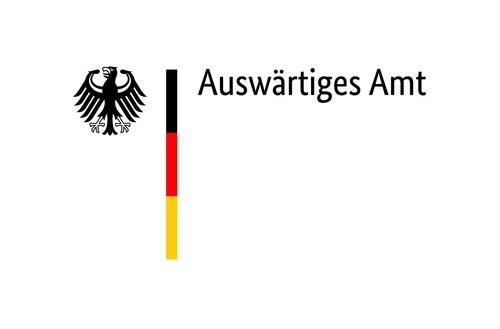The cultural life of the Sacha people reaches its annual peak during the Ysyach festival, which celebrates the rebirth of nature after the long winter. During this festival, rituals involving fermented mare's milk express the special worship of the horse, which the Sacha people still depend on today for food and materials. Many of the objects on display here are used during this festival. In the past, shamans also played a special role among the Sacha people as mediators between humans and the powers of nature, which were both benevolent and sometimes hostile.
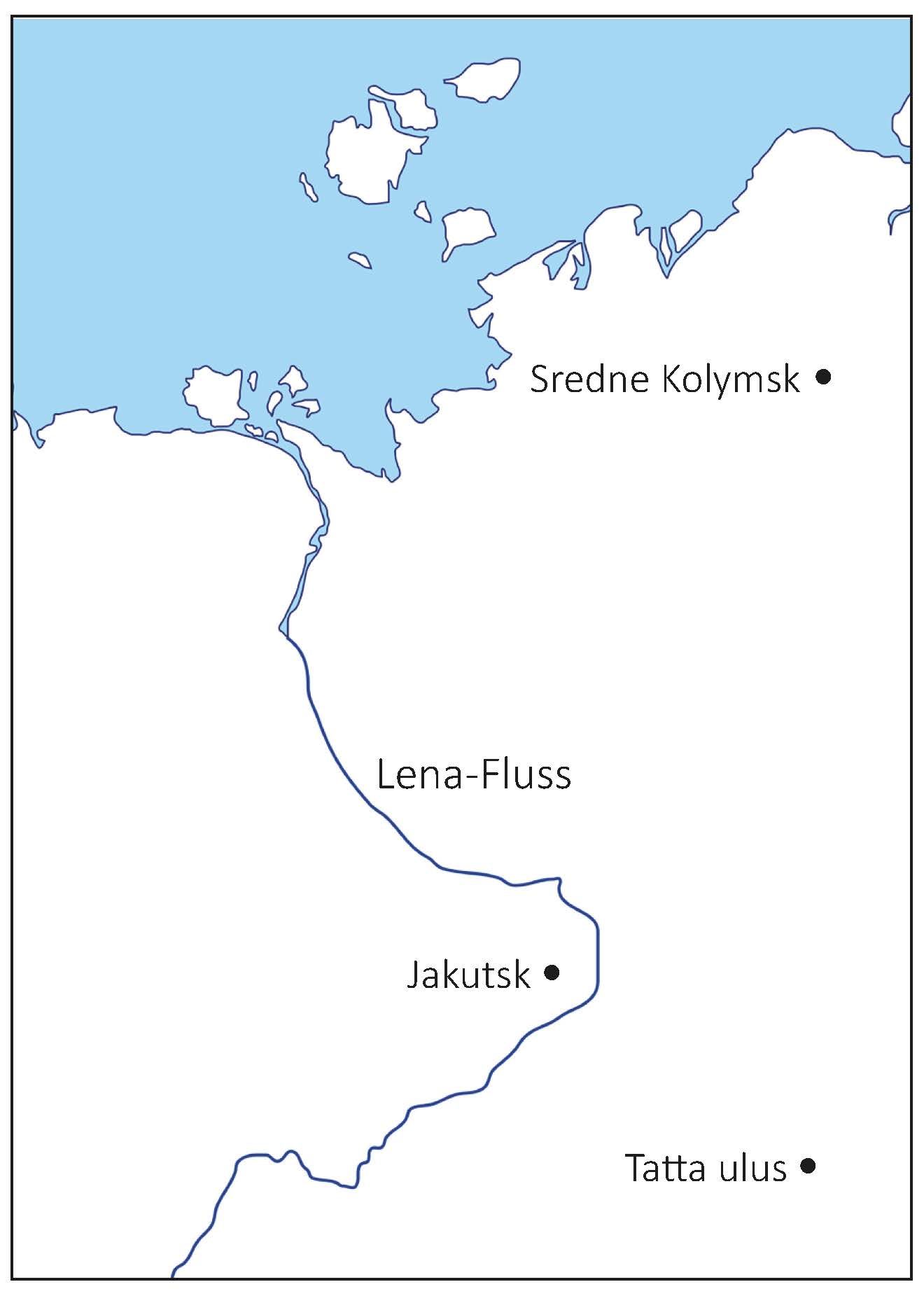
Sakha
[Self-designation сахалар] The Sakha, formerly also known as Yakuts, are a Turkic-speaking people who migrated from southern Siberia to the area of the Lena River in northern central Siberia. From there, they also brought horse breeding and adapted it to northern environmental conditions. It has remained their economic basis, and its importance is expressed in all areas of life. The cultural life of the Sakha reaches its annual high point during the Yhyakh festival, which celebrates the rebirth of nature after the usually harsh winters.
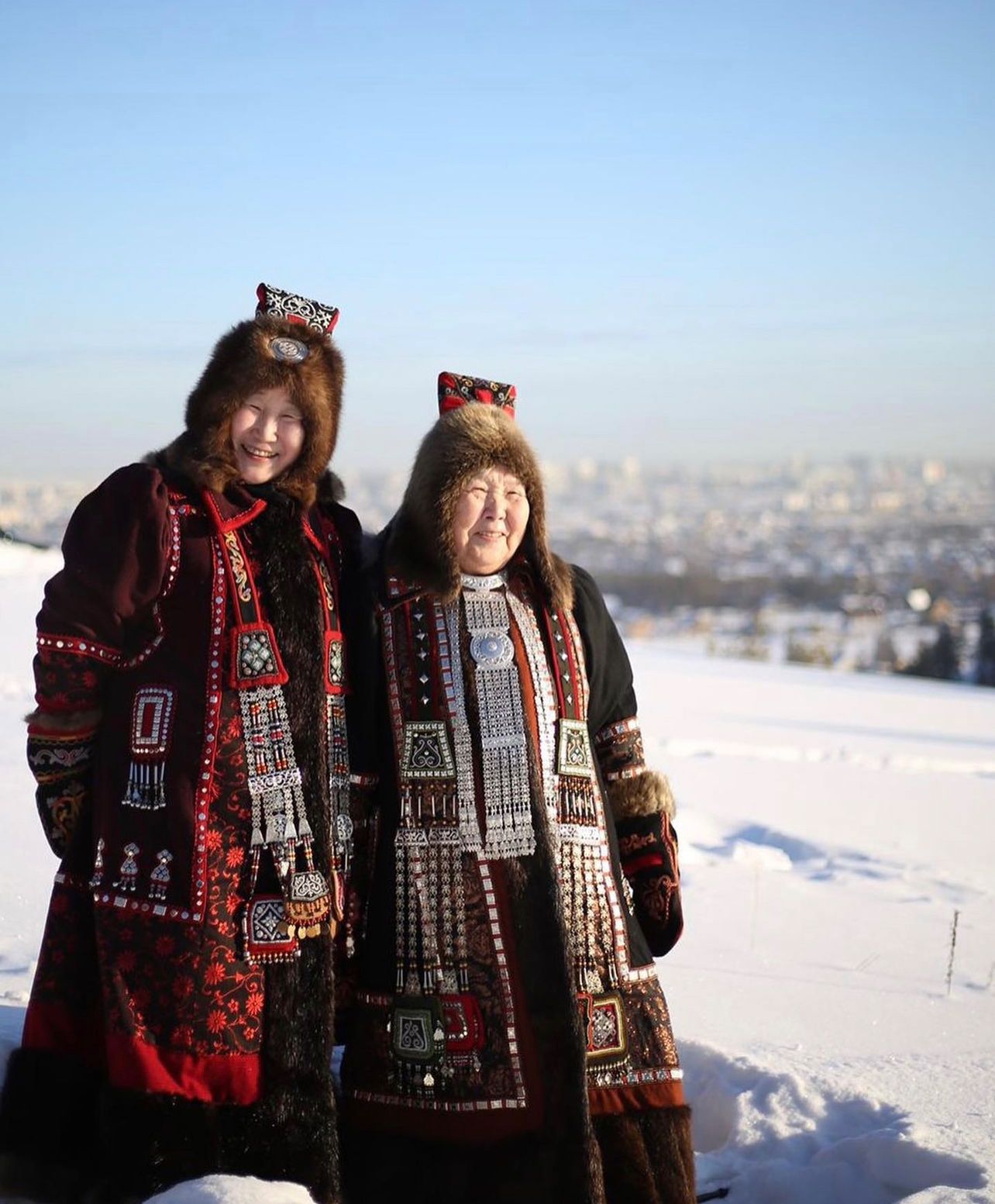
Worldview and ritual
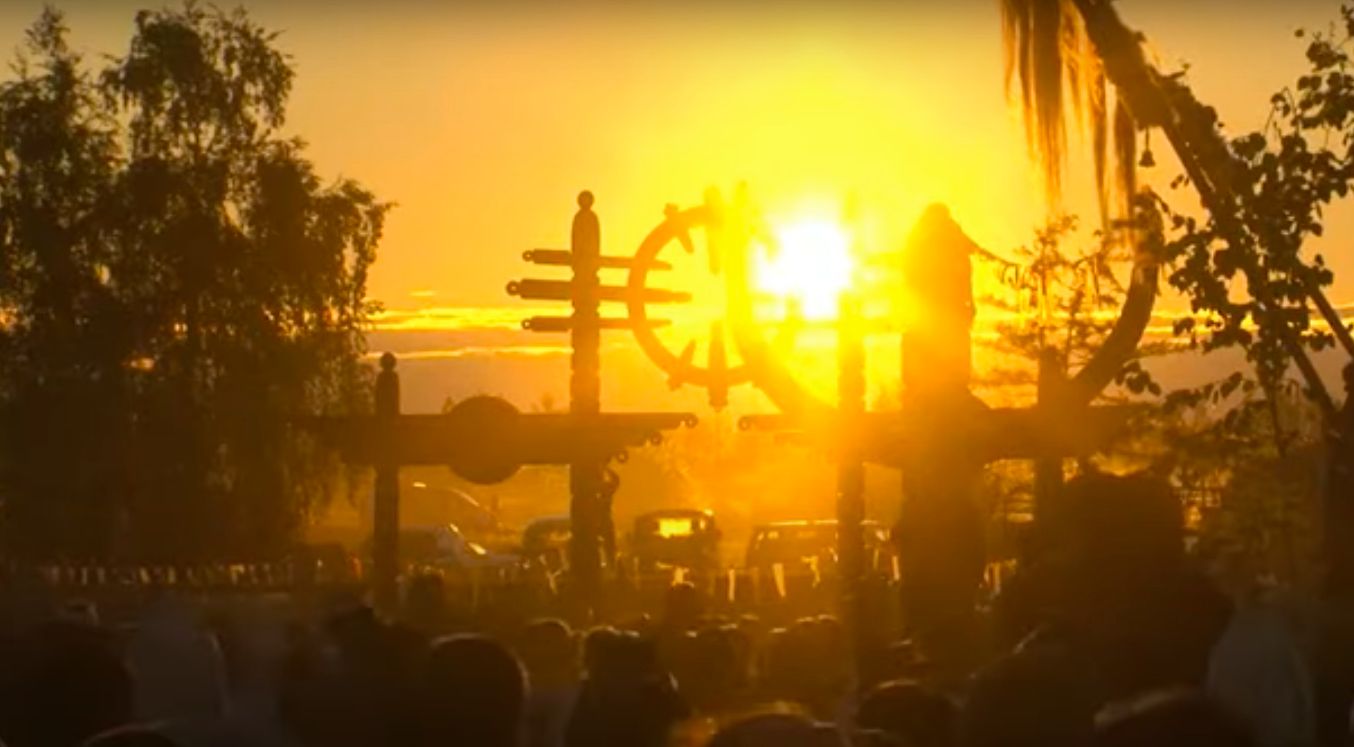
Horse breeding
Horse breeding remains one of the Sacha's main sources of income, providing not only milk and meat but also important materials for making clothing. For this reason, horses are still held in high esteem at seasonal festivals. Ritual drinking vessels, tools, and special containers for making fermented horse milk (kumys) are presented here. The reverence for horses is also expressed in the often particularly elaborate decorations on horse saddles and in the carefully and lovingly embroidered horse blankets.
Household items
The household items shown here mainly include vessels and utensils used in the processing and consumption of milk. The use of birch bark in the construction of traditional dwellings is also shown. This example illustrates how older objects in museum collections help today's Sakha to identify and revive old and, in some cases, forgotten craft techniques.
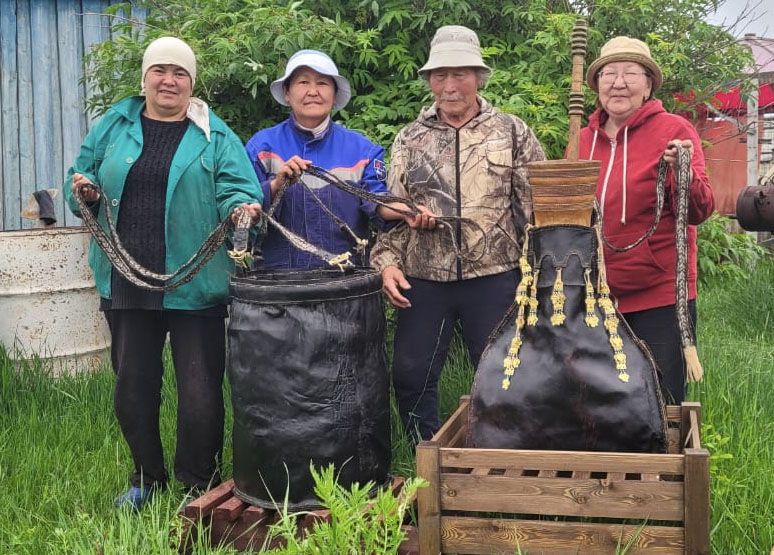
Clothing
The cut of the clothing and the design and meaning of the ornaments go back to long traditions. Two women's coats are used to explain the motifs of embroidered ornaments that express belonging to family groups. In addition, certain motifs also show the reverence for benevolent forces and the protection against evil spirits. Similar motifs can also be found on the cap ornaments. Like other items of clothing, headwear also has to cope with the extreme temperatures during winter and therefore has special add-ons such as forehead and ear warmers.
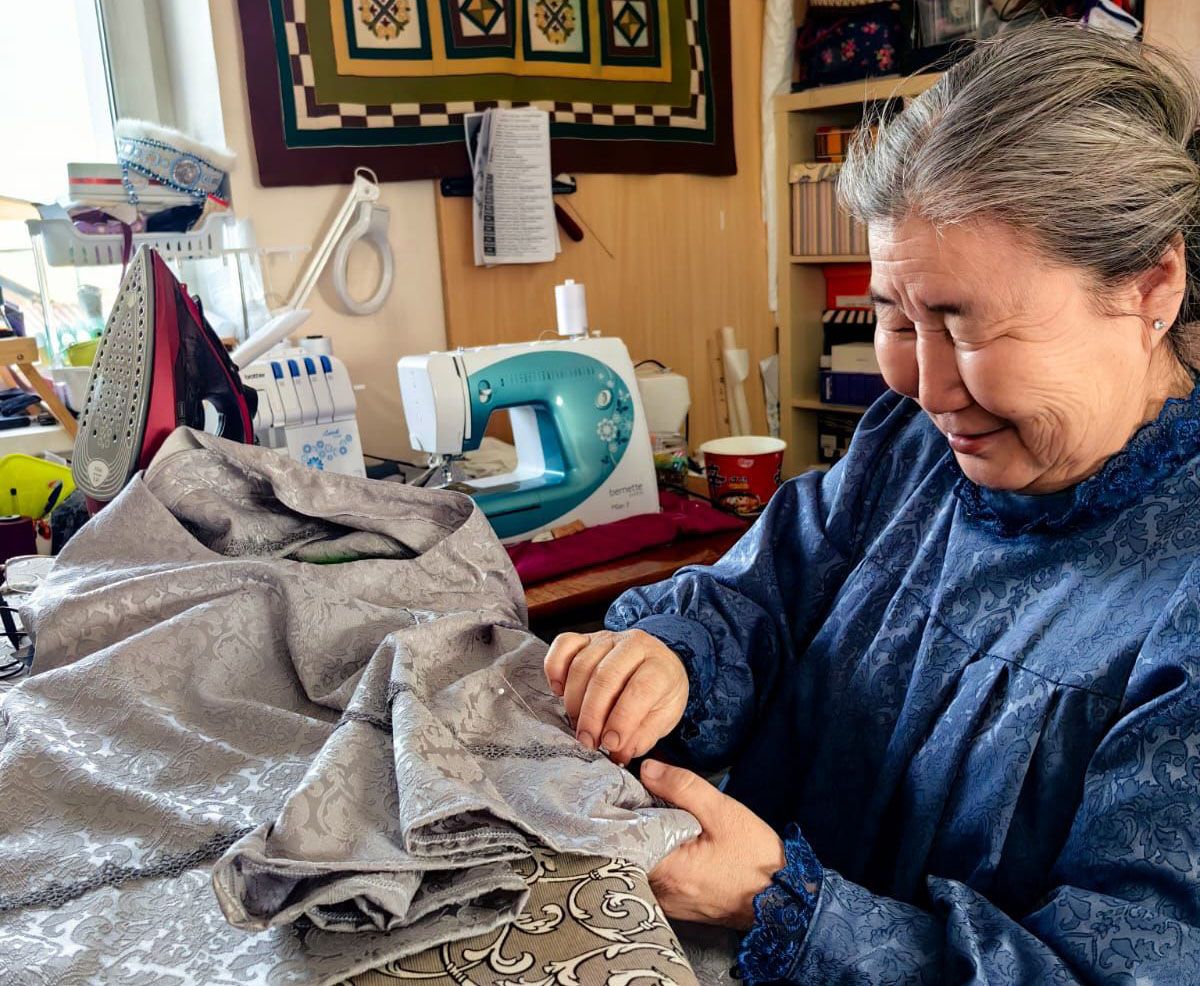
Group by
Worldview and Rituals
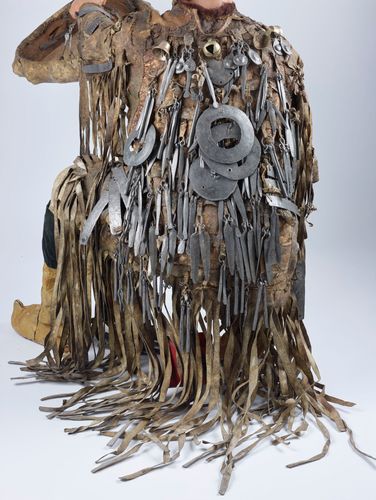
Shaman's garment
Horse breeding
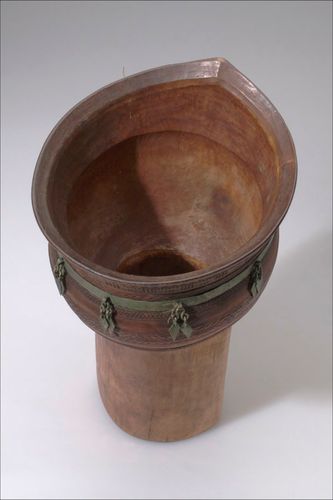
Milk funnel
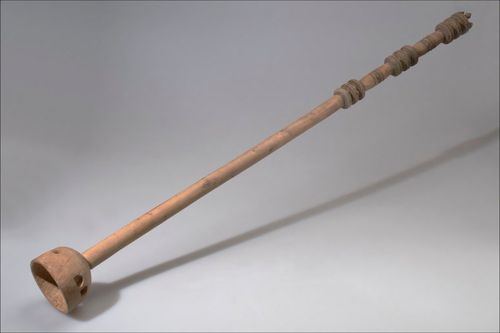
Milk whisk
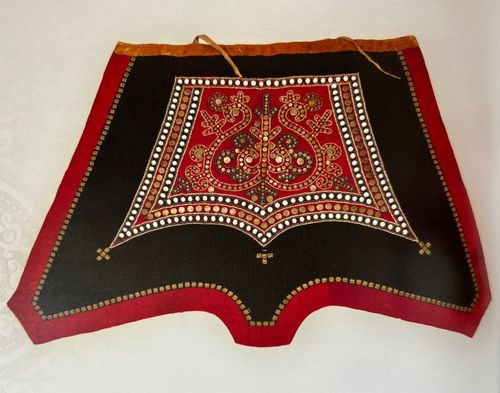
Horse blanket
Horsewhip
Drinking vessel
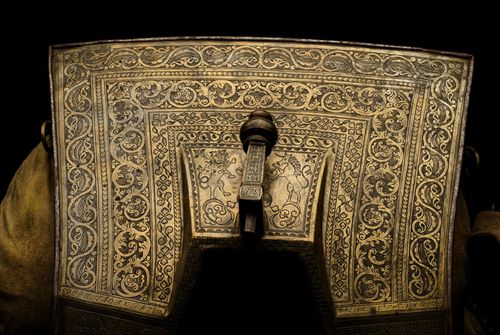
Saddle
Bridle
Household items
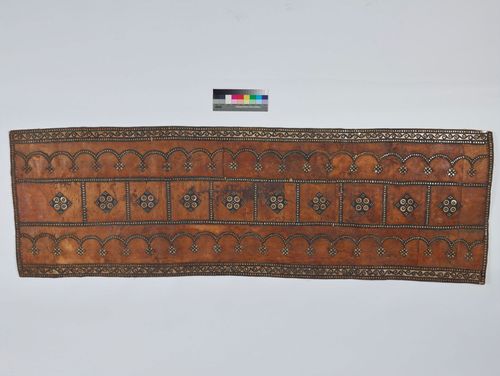
Birch bark panel

Milk whisk
Clothing

Birch bark panel

Woman's coat
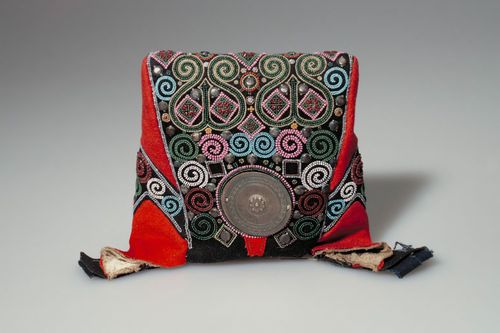
Cap ornament
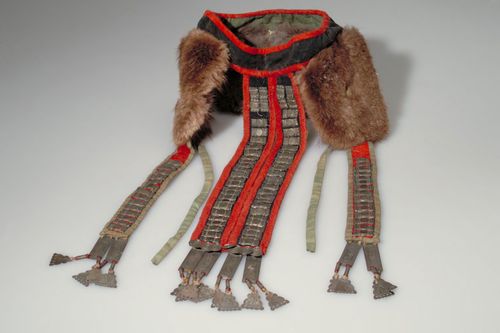
Forehead and ear warmers
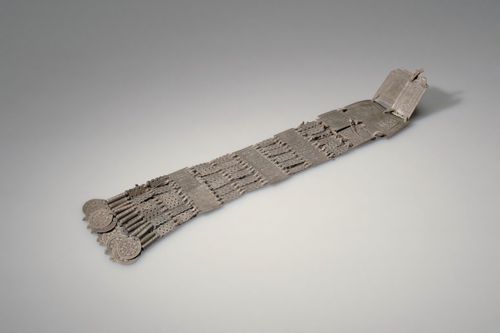
Back jewelry (fragment)
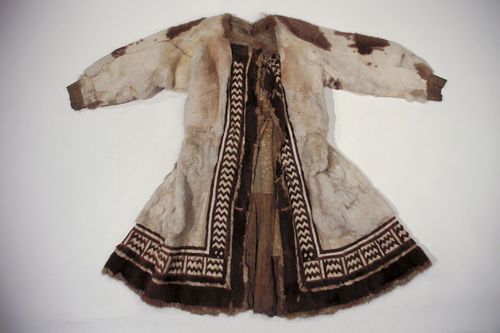
Woman's coat
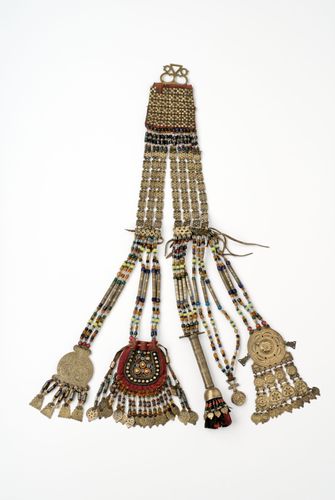
Back jewelry (fragment)

